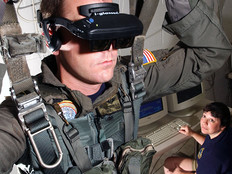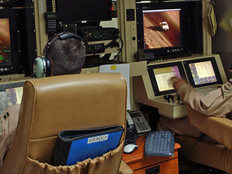Federal Internet of Things Applications Will Drive Cloud Spending, Report Says
The federal cloud services market is booming, and cloud storage is poised to see growth in particular as more agencies deploy Internet of Things (IoT) sensors. Those sensors will generate large amounts of data that will then be stored in the cloud, according to a report from Big Data and analytics firm Govini.
Annual federal cloud spending increased by 24.8 percent to $3.3 billion in fiscal year 2015, up from a five-year low of $2.6 billion in FY12, the report notes. Infrastructure as a Service (IaaS), the largest market segment, is driving federal cloud spending, and IaaS spending increased by 53.3 percent to $897.2 million in FY15 from $585.2 million in FY12, according to Govini.
The federal IoT ecosystem encompasses a variety of technologies, Govini notes, including software applications; endpoint defense; wireless devices; sensors; data analytics; database software; Extract, Transform and Load (ETL) and data processing; and cloud storage.
“The IoT market is experiencing steady growth despite a slight dip in FY13 due to sequestration,” the report states. “Spending increased by 20 percent to $8.8 billion in FY15, up from $7.4 billion in FY14. A breakdown of the three categories shows which segments are driving the most spend. In FY15, Sensors saw the greatest increase at 56 percent, followed by Cloud Storage with a 48 percent spending increase and ETL & Data Processing with a 46 percent increase.”
Cloud storage includes the major cloud computing models — IaaS, Email as a Service, Platform as a Service (PaaS) and Software as a Service (SaaS), and the services that support their deployments.
Modernizing IT Infrastructure
The Obama administration and Congress are debating different methods of funding federal IT modernization, with the administration favoring a $3.1 billion revolving fund, and a group of lawmakers pushing a bill that would give agencies more leeway to create working capital funds to update IT.
Govini says that the debate over modernizing federal technology “becomes even more important when one considers that advancements in cybersecurity, mobility and IoT are all highly dependent on a modern IT infrastructure.”
IoT in particular is dependent on cloud storage and back-end development tools under the IaaS model. “Even without comprehensive policies and programs in place to guide modernization, federal agencies spent $3.6 billion on IaaS between FY11 and FY15,” with spending rising 21.3 percent to $897.2 million in fiscal year 2015. FY16 spending is on track to grow even more.
How Federal IoT Will Impact Cloud Spending
IoT deployments require complex cloud computing architectures, Govini notes, as software applications on mobile devices feed data into broader platforms, which are continuously being optimized for better interaction with back-end infrastructure and development tools.
Govini notes that the PaaS cloud model is ideal for IoT development, and that more federal IoT activity will likely lead to increased PaaS spending on the part of agencies.
“The widespread adoption of IoT is driving PaaS utilization in the private sector, and the public sector is poised to follow suit,” the report notes. “PaaS is the most suitable cloud computing model for IoT because of its flexible architecture and ability to support development of applications built for event-driven data, instead of traditional applications built for structured data.”
Additionally, PaaS allows for rapid software development, provides agile workflows, access from anywhere and simplified security solutions, including device management, Govini notes. “Federal spending on PaaS has increased steadily over the past five years and IoT will fuel its growth even further,” the report says.
Meanwhile, SaaS is increasingly becoming the dominant cloud delivery model “due to the benefits it offers, such as automatic patch management, easier administration, fewer compatibility issues, easier collaboration, and global accessibility,” according to Govini.
As a result, IoT adoption “will fuel the growth of SaaS and reshape its role in cloud computing,” according to Govini, as machines and sensors talk to one another.
“Traditional SaaS applications display historical data and allow users to interact with that data to improve decision-making. IoT upends this model by using real-time data to improve decision making and could potentially do so without human interaction,” the report notes. “In a machine-to-machine IoT-driven world, the data transfer patterns will fundamentally change. What used to be ‘data being in the computer’ will change to ‘computers being in the data’ and so too will SaaS, the top layer of the cloud computing stack.”









